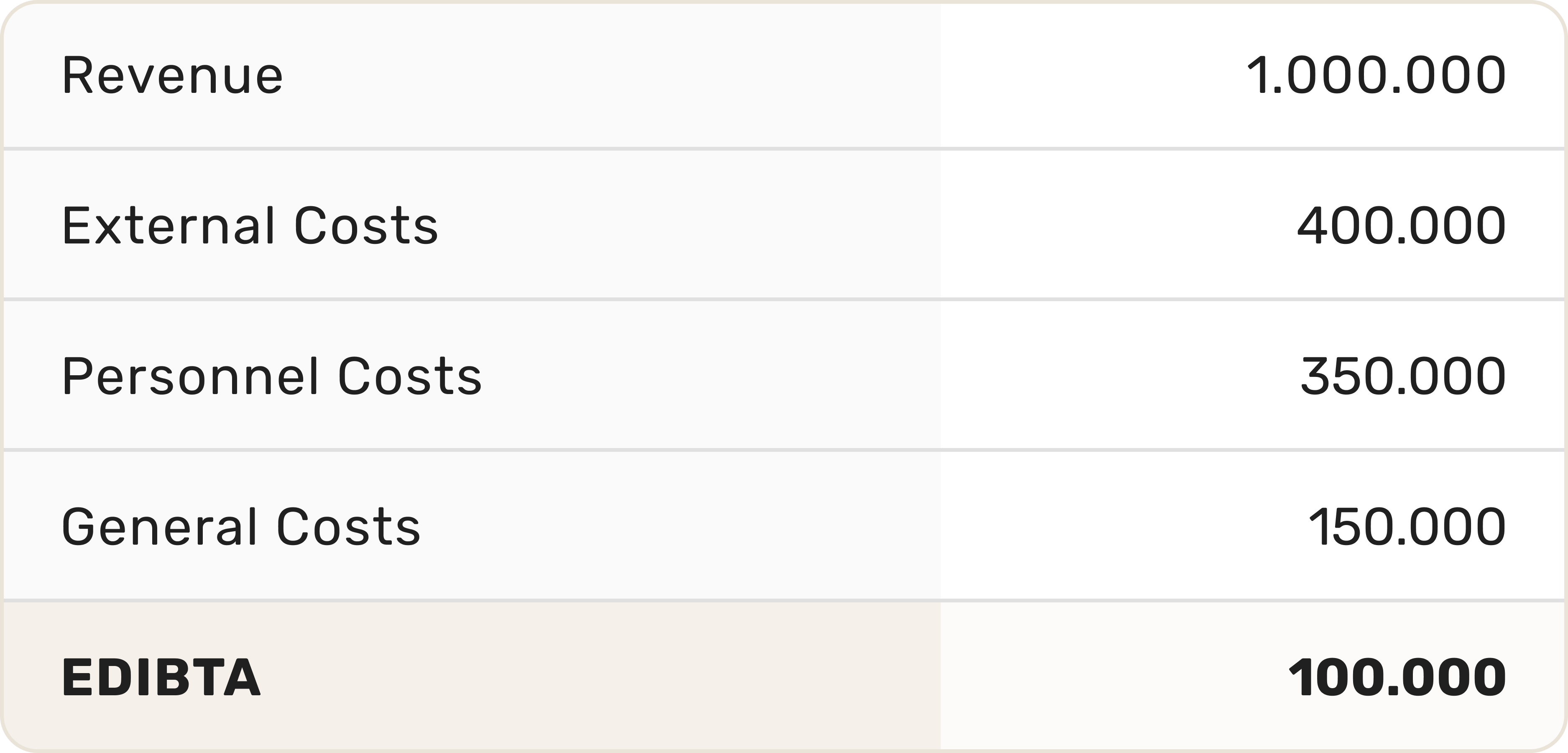

You sold a project, managed it well, kept external costs under control, and stayed within budget. Well done!
You check the margin: it looks solid, the client is happy, and so is the project manager.
But… did the company actually make money?
There’s a key metric that often gets ignored because it sounds like "finance team stuff": EBITDA.
In our favorite example, you sell an ice cream for €2.00.
The cost of ingredients and labor to make it is €0.50.
Result: Contribution margin = €1.50.
That €1.50 is what you use to pay for:
All those costs that keep your company standing, that’s exactly where EBITDA comes in.
It shows what’s truly left in the business after covering operating expenses, and before taxes and interest.
EBITDA stands for Earnings Before Interest, Taxes, Depreciation, and Amortization.
It sounds like a term cooked up by a stressed accountant, but it’s actually one of the most important metrics for any decision-maker in a business, agency or elsewhere.
In plain English?
EBITDA = what your business really earns from its operations after variable and fixed costs, but before financial and extraordinary items.
It connects revenue, direct costs, and overheads without distractions.
Let’s be clear:
Revenue is what you sell.
Gross margin is what’s left after direct costs (freelancers, tools, media buys, etc.).
EBITDA is what remains after you also subtract salaries, rent, bills, and all your other operating expenses.
And that’s why it matters: EBITDA tells you if your company is actually sustainable.
Let’s say your agency brings in €1,000,000 a year in projects.
That leaves you with €100,000 EBITDA.

Not bad, but fragile. If you lose two clients or increase salaries, that buffer disappears.
That’s why monitoring EBITDA isn’t just for the CEO: it matters to project managers, account teams, and operations too.
To track EBITDA properly, you need clarity on three core elements:
It’s not complicated.
The real challenge? Getting all the data together in one place, up to date, and not scattered across Excel spreadsheets or locked in someone’s head.
The Profit & Loss section of wethod, gives you a real-time and forecasted view of your EBITDA, project by project, month by month.
This means you can see the real costs, regardless of whether someone logs their hours.
Best part?
Wethod’s P&L starts from your current data and projects forward, showing future EBITDA based on your pipeline, team, and forecasted overheads.
EBITDA is like an iceberg: the visible project margin is just the tip.
Below the surface are your operating costs, business decisions, contracts, and numbers that you can’t afford to ignore.
That's leadership, and no, you don’t need a finance degree.
You just need a tool that tells you the truth.
👉 Want to know your agency’s EBITDA without having to crunch the numbers manually? Try wethod: the platform that clearly and simply shows you whether your projects are truly supporting your business.
Request your free demo now and start getting the full picture.
